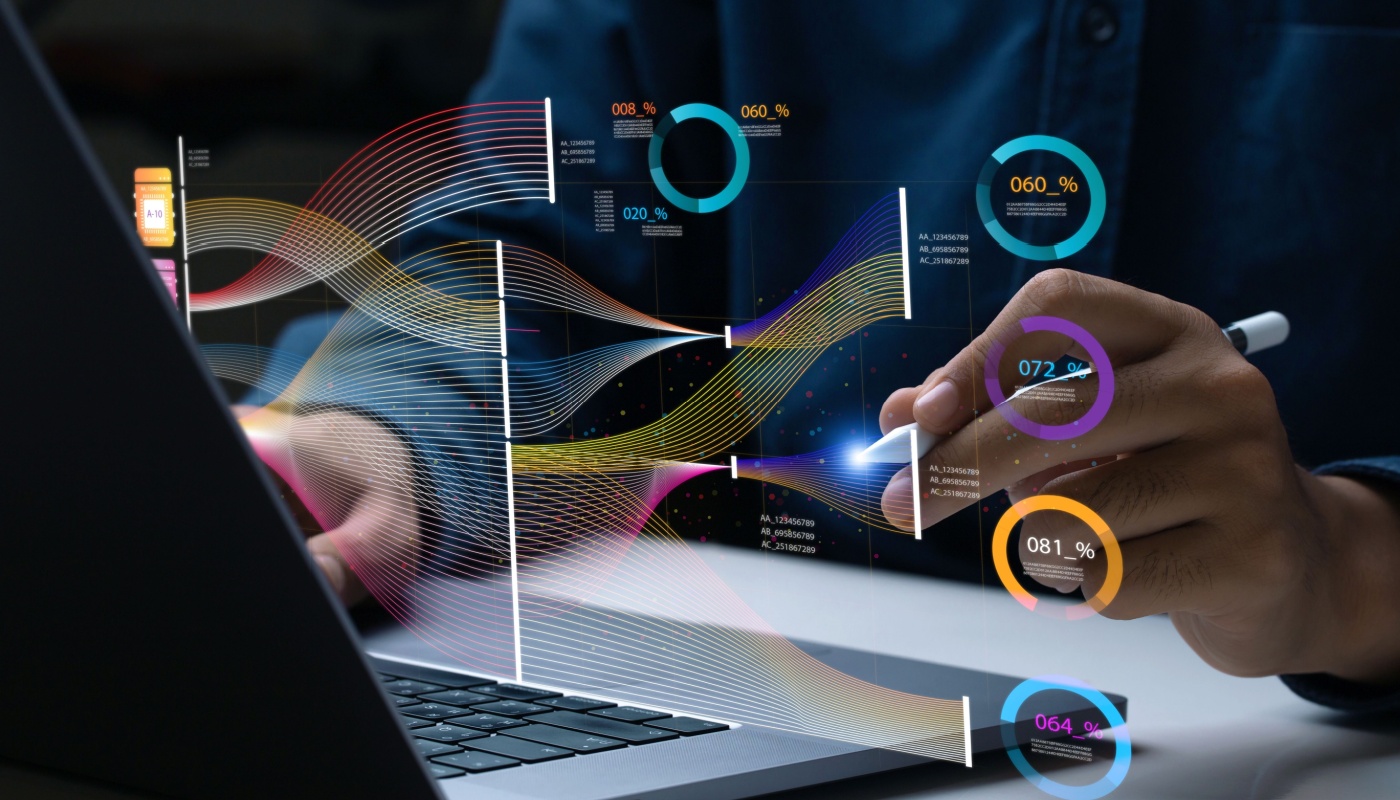Data visualization plays a powerful role in clinical operations. When clinical trial teams can visualize data, they can better contextualize and draw meaning from that information. Insights can then be applied to clinical and research practices.
Digital solutions that provide intuitive dashboards, interactive visualizations, and customizable reports can help teams monitor trial progress, identify risks, and optimize resource allocation.
Visualizing Data in Clinical Trials
Data visualization refers to the presentation of data in visual forms that make analysis and related concepts easier to grasp. A common example is the use of a bar graph to compare values or a pie chart to express values as percentages of a total.
Much data in the life sciences lends itself well to visualization. In a 2023 study of scoping reviews and evidence maps, researchers Emily South and Mark Rodgers found that about one-third of the documents studied included at least one form of data visualization. Pie charts, bar charts, and cross-tabulations were the most popular, appearing in 60.8 percent of the sample set. Approximately 65 percent of the studied data visualizations focused on a single variable, while another 26 percent limited themselves to two variables. Nearly one in three opted for black and white presentation over color.
South and Rodgers noted that while data visualizations are in use, many life sciences projects and publications underutilize data visualization as a tool. Organizations can use data visualizations to:
- Present analysis of multiple variables or scenarios for easier comparison.
- Engage interactive data visualizations in digital contexts.
- Employ integrated software that can create and update visualizations automatically based on publicly-available data, information entered by a clinical trial team, or both.
When it comes to data visualization, presentation is everything. “Well-designed visual displays have the power to convey health messages in clear, effective ways to non-experts, including journalists, patients and policymakers. Poorly designed visual displays, however, can confuse and alienate recipients, undermining health messages,” write Steven Woloshin, Yanran Yang, and Baruch Fischhoff in a 2023 article in Nature Medicine.
When data visualization is well-designed, it can show structures and relationships within data that are difficult or impossible to convey via text. Interactive visualizations invite users to explore data, finding what is most relevant to their concerns or decisions in the moment. Effective data visualization can even improve accessibility for those who find that reading or mathematics aren’t their strong suit. With so much at stake, choosing the right data visualization is crucial.

Choosing Digital Solutions for Data Visualization
While many deep data repositories are publicly available, accessing these resources without effective digital tools remains difficult. In a study of clinical trial results available on ClinicalTrials.gov, researchers Xuanyu Shi and Jian Du found that “ClinicalTrials.gov serves as a valuable and complementary repository, yet synthesizing information from it remains challenging.”
To reach this information, clinical trial teams benefit from the use of a digital solution that combines access to ClinicalTrials.gov and many other sources with data analysis and visualization capabilities.
Anju’s TA Scan provides clinical trial teams with data visualizations for a number of purposes. TA Scan uses data from hundreds of public domain sources covering topics like:
- Clinical trials occurring worldwide.
- Drugs currently available and under investigation.
- Clinical trial site information.
- Presentations, publications, and principal investigator profiles.
TA Scan’s publicly available data sources include ClinicalTrials.gov, PubMed, and others. Through unique, patented algorithms, TA Scan expresses its linking and analysis findings through data visualizations that can easily be shared with relevant stakeholders. These visualizations allow for better data analysis, comprehension, and decision-making.
Digital dashboards that offer data visualization, such as those presented by TA Scan, can also boost healthcare decision-making. In a study of public health dashboards related to the COVID-19 pandemic, Annett Schulze and fellow researchers found that dashboards played a key role in sharing information — although researchers tended not to describe their dashboards in detail when mentioning them in pandemic-related studies. With information presented on an easily-accessed and regularly-updated dashboard, however, clinical trial teams can better understand available information.

Turning Data Into Actionable Insights
Data visualization can make complex information more accessible, understandable, and comparable. Having access to this information can in turn help clinical trial teams make better decisions and oversee trial planning and execution more effectively.
By using TA Scan’s data visualization features, clinical trial teams can:
- Forecast clinical trial enrollment outcomes. TA Scan offers precise predictive analytics of clinical trial outcome scenarios. Teams can better understand and predict trial enrollment.
- Plan clinical trials more accurately. With access to information on 480,000+ clinical trials occurring worldwide, TA Scan can present easy-to-digest visual information on clinical trial feasibility at any given site or timeframe.
- Monitor clinical trial progress. Understand how current trials are progressing and monitor the progress of any given trial, with information expressed in data visualizations for easy sharing with relevant stakeholders.
- Identify risks. Will you have an adequate pool of potential trial participants? What competing trials are occurring and where? TA Scan can offer insights into trial site risks, supporting more informed decision-making in the planning process.
Data visualization helps clinical trial teams understand complex issues quickly and compare information effectively. With robust file sharing and reporting features, TA Scan ensures this information stays up to date and is easily shared with stakeholders throughout the clinical trial process. With the right digital solutions, clinical trial teams can rely on comprehensive data sets and thorough analytics for actionable insights.
Images used under license by Shutterstock.com
Authored by Elke Ydens, Associate Director of Business Solutions, Data Division
Elke Ydens, Associate Director of Business Solutions at Anju’s Data Division, brings over a decade of life sciences experience and a PhD in Biochemistry and Biotechnology from the University of Antwerp. As a Subject Matter Expert in Data Science, she adeptly addresses customer needs, leveraging her background in neuro-immunology and biochemistry. Elke remains dedicated to professional growth, contributing to industry publications, and staying updated on industry trends, while also finding success in extracurricular pursuits, formerly competing in world and European bridge championships, and more recently active in beekeeping and coaching. Connect with Elke on LinkedIn to explore her achievements further.
